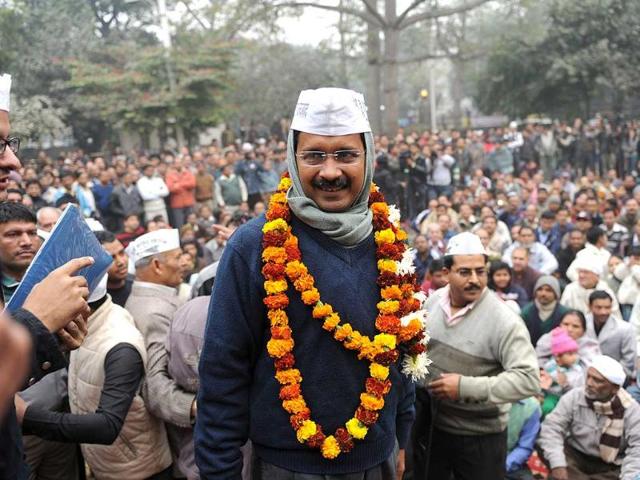AAP can take several steps to inspire confidence
AAP's explicit bent towards democratic, clean, just policies, is going to be tested to its limits. It would be a mistake to expect a miraculous transformation, but there are several steps that AAP could take to inspire confidence.
Delhi as a city presents an enormous challenge to anyone at its helm. It is oversized, its infrastructure is overstressed, it is socially aggressive, pollution levels are abysmally high, it is cruel to its poor and astonishingly indulgent of its rich and powerful, and it is an enormous parasite feeding on rural resources while pumping back waste into them. Notwithstanding its positive attributes, it is a socio-ecological nightmare.

So the Aam Aadmi Party (AAP) has its work cut out as Delhi’s government. Its explicit bent towards democratic, clean, just policies, is going to be tested to its limits. It would be a mistake to expect a miraculous transformation, but there are several steps that AAP could take to inspire confidence.
It has announced the empowerment of mohalla sabhas; this is most crucial. The 74th Constitutional Amendment, meant to empower urban citizens in the city’s governance, has never been seriously implemented. The ward sabha, which it empowers, is too big for face-to-face decision-making. In 2005, through a Model Nagar Raj Bill, the Centre urged the states to empower area sabhas at the polling booth level. Delhi could be among the first to move towards empowering mohallas and neighbourhoods, enabling a greater sense of ‘community’ through dialogue and decision-making.
A city’s budgeting and planning should start at this community level, where each citizen can have a say in setting local priorities. Pune and Bangalore have attempted participatory budgeting, but with severely limited mandates. AAP could see it meaningfully implemented. Another crucial step would be to integrate local plans into larger city units, including landscapes of ecological contiguity. In Delhi, it would be exciting to see planning being done keeping the integrity and connectivity of the Yamuna and the Ridge (Aravalli) in mind.
The provision of appropriate infrastructure, local work, schools and health services, sanitation, and other facilities to transform the conditions of slums is critical. The upgrade of the conditions of wastepickers (who could be given charge of much of the city’s waste management) and of workers in the thousands of manufacturing units are among the many steps AAP could take.
While I endorse the provision of free water and cheaper power to the poor, it is a mistake to indulge the rest of the city with this. These services come at huge ecological and social cost with either nature or some rural populations paying them. So AAP needs to deal with the rampant waste of water and power in Delhi, and reduce its parasitism on the countryside. It could bring in a system of incentives and penalties that make the well-to-do reduce their consumption, eliminate waste, enforce compulsory water harvesting and switch a number of energy demands to localised solar options. An awareness campaign could help win public support.
Taking a few such steps towards making Delhi a more sustainable and equitable city could show that AAP means business. This could also help in placing such issues at the centre-stage in the national elections. The next few months are a test of whether AAP is seriously considering and acting on policy inputs civil society groups have given it. They are also a test of Delhi’s citizens, who have to actively help the party in this transformation.
Ashish Kothari is with Kalpavriksh, Pune
The views expressed by the author are personal





